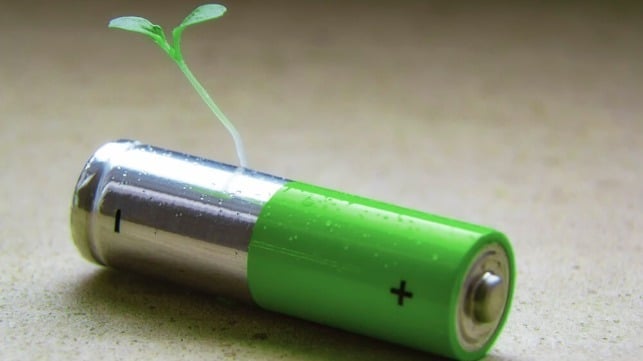Enhanced Safety Regulations Could Advance Maritime Electrification

 The maritime industry is having to contend with an increasingly complex regulatory landscape. The introduction of FuelEU Maritime at the beginning of the year has, for the first time, established comprehensive regulations for phasing out the use of fossil fuels by vessels sailing in Europe. Additionally, the recent outcomes from MEPC 83 suggest a likely introduction of a new global carbon pricing mechanism for international shipping.
The maritime industry is having to contend with an increasingly complex regulatory landscape. The introduction of FuelEU Maritime at the beginning of the year has, for the first time, established comprehensive regulations for phasing out the use of fossil fuels by vessels sailing in Europe. Additionally, the recent outcomes from MEPC 83 suggest a likely introduction of a new global carbon pricing mechanism for international shipping.
Furthermore, shipping is quickly approaching its 2030 checkpoint – as outlined in the IMO’s revised GHG strategy in 2023 – by which time the industry must evidence a 20% reduction in carbon emissions, with the ambition to achieve 30% compared to its 2008 baseline. Combining this with the MEPC 83 outcomes, the industry is under significant pressure to demonstrate tangible reductions in carbon emissions from its operations.
While it's essential to prioritize the transition to alternative fuels, we must also pay equal attention to the systems and technologies that support valuable emissions savings in the short term, until such point that these fuels are widely available and affordable. This involves shipowners and operators engaging with operational efficiency solutions, such as reducing speed, voyage optimization, and weather routing, that are supported by innovative clean technologies. Maritime electrification technology is an example of a viable solution that can act as a key enabler of the industry's decarbonization transition.
Bureau Veritas Marine and Offshore (BV) has recently released a technical paper, "Maritime Electrification: Maritime Battery Systems and Onshore Power Supply" which focuses on two emerging pathways that can support the development of greater maritime electrification: Energy Storage Systems (ESS) utilizing lithium-ion (li-ion) battery technology, and Onshore Power Supply (OPS) systems.
Findings from the Maritime Battery Forum (MBF), of which BV is a member, reveal that the use of battery-powered operations in the global fleet has expanded to 1,045 vessels, with an additional 561 currently under construction. Of the current global fleet, approximately 90 vessels operate on pure battery power, with a further 50 vessels in the order book. There are also over 550 vessels in service using hybrid battery propulsion, with an additional 400 scheduled for construction.
This increase in the use of ESS and OPS technologies must be supported by standardized integration through the development of intuitive, simple, and mandatory safety guidance. The integration of ESS solutions onboard vessels requires owners and operators to consider a myriad of details, including the appropriate sizing and selection of battery cells, the inclusion of a reliable battery management system, and the ruggedization of the overall system to withstand the challenging marine environment.
Despite the significant green credentials of ESS, the technology also presents additional safety considerations due to the fire risks associated with certain types of li-ion battery technology, known as thermal runaway. This occurs when the battery's temperature rapidly increases due to physical damage, manufacturing defects, or exposure to extreme temperatures. A li-ion battery fire will sustain itself, meaning that rather than lasting minutes or hours, a fire can continue for days.
Although the risk profile of li-ion battery technology is significant, industry bodies have yet to introduce comprehensive international regulations to address the safe design of li-ion battery installations on vessels, which must include specific firefighting requirements tailored to combat a thermal runaway event. This lack of regulation has the potential to create a degree of uncertainty amongst owners and operators who might otherwise wish to engage with ESS technology.
To address the regulatory shortfall that hinders the widespread and safe implementation of battery systems, industry groups have established guidelines and frameworks to assist system owners and operators. As a member of the MBF, BV has worked alongside organizations such as the European Maritime Safety Agency (EMSA) to develop their guidance on the Safety of Battery Energy Storage Systems, which was published in 2023. This guide facilitates the safe deployment of ESS on vessels. It outlines emergency response procedures to inform first responders, crew members, and land-based fire services with regard to appropriate action plans.
Looking ahead, the pathway to net-zero emissions will increasingly depend on the accelerated uptake of proven clean technologies such as ESS and OPS. As regulatory momentum builds and the industry works to meet its ambitious climate goals, maritime electrification emerges as a practical and scalable solution to reduce emissions without compromising operational efficiency. Crucially, realizing this potential will require collaborative efforts between regulators, industry stakeholders, class societies, and technology providers to overcome technical challenges, establish clear protocols, and deliver the necessary infrastructure to support this shift.
If the industry can work to overcome these remaining challenges, maritime electrification has the potential to serve not only as a bridge to 2030 compliance but also as a long-term pillar for sustainable shipping.
Marcos Salido is Environmental Project Manager at Bureau Veritas Marine and Offshore.
The opinions expressed herein are the author's and not necessarily those of The Maritime Executive.
